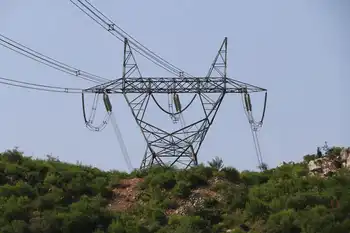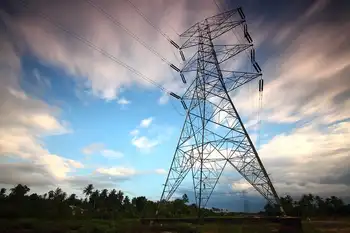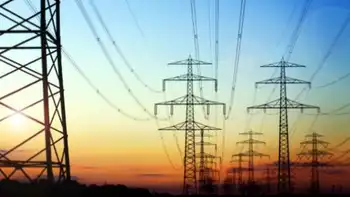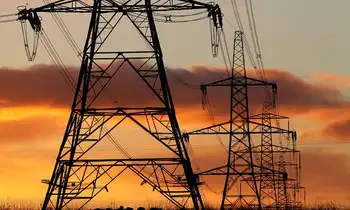Boulder on track to become first smart grid city
By Associated Press
Arc Flash Training CSA Z462 - Electrical Safety Essentials
Our customized live online or in‑person group training can be delivered to your staff at your location.

- Live Online
- 6 hours Instructor-led
- Group Training Available
Xcel Energy, the nation's No. 1 retail provider of wind power, leads the $100 million effort in this university city of 100,000 in the Rockies foothills. By 2010, homeowners will monitor how much power they're consuming. Plug-in electric vehicles will feed power into the grid. Energy-saving appliances and thermostats will feed information to the network. And all of it will enable Xcel to distribute electricity when and where it's needed, saving millions of dollars and the need to build more power plants.
Other benefits: Lower carbon emissions, coordinating energy use with the availability of power sources such as wind and solar, and savings by avoiding power disruptions.
"This really is the only truly smart-grid city in the country," said Roy Palmer, Xcel's project executive for the program. "All the components have never been brought together at one time."
Minneapolis-based Xcel, Colorado's largest electric utility, has installed about 14,000 "smart" meters that provide information to the utility and to customers. Xcel and its contractors have strung more than 100 miles of cable over power lines for broadband transmission and hooked up a handful of homes to program and monitor energy use.
Full build-out of the system is expected by June, with most of the city's 45,000 meters capable of two-way communication and Internet access so customers can actively control how and when they use energy. Some households will be part of a test that eliminates meters altogether to concentrate on getting energy use information over the Internet.
Most of the system will be up and running by year's end, Palmer said.
Other partners in the venture are the city of Boulder, the University of Colorado, the Boulder-based National Institute of Standards and Technology and the nearby National Renewable Laboratory in Golden.
Xcel's use of plug-in electric hybrid vehicles to draw energy from the grid and contribute to it, turning them into "mobile storage devices," is a unique feature in Boulder, said Ralph Cavanaugh, energy program for the Natural Resources Defense Council and a member of a federal electricity advisory committee.
Boulder's project is persuading skeptics that smart-grid systems aren't "simply some kind of pie in the sky," Cavanaugh said.
Boulder County is converting three of its hybrid vehicles so they can deliver power into the system. The total conversion cost is $10,000 to $15,000, said Xcel spokesman Tom Henley.
"A lot of people around the world are looking at Boulder," said Brendan Herron, vice president of corporate development and strategy for Maryland-based Current Group, a provider of two-way, high-speed communication and another of Xcel's partners.
Herron, whose company works abroad, said interest in the project has come from as far as China.
Val Peterson knows firsthand about the global interest. Some of those world travelers have milled through her house.
Peterson and her husband, G.P. "Bud" Peterson, chancellor of the University of Colorado-Boulder, have turned the chancellor's residence into a showcase for the smart grid effort.
Peterson, a retired Spanish teacher, recently tapped on a laptop computer in a formal dining room to check settings for the home's thermostats, electricity being generated by solar panels on the roof, and the carbon dioxide emissions being avoided as a result.
"Today it says what we have done is equivalent to removing 17 cars off the road for the day. I love that," Peterson said.
The Petersons program an electric hybrid SUV provided by Xcel to draw power when system demand is low and when the energy source is likely to be wind. They have a backup lithium ion battery that can supply their house with several hours of power in an emergency. Energy consumption in the 7,000-square-foot house, which has public areas for university events, has dropped 30 percent.
University of Colorado behavioral scientists are working with Xcel Energy to gauge if people are willing to become more active energy consumers.
"There's a lot technology involved in what Xcel's doing," Bud Peterson said. "But if we're not able to change people's behavior, then all the technology in the world isn't going to help."
In his inaugural speech, Obama said a smart grid could save money, protect power sources from blackout or attack and deliver clean energy nationwide. The $819 billion economic stimulus bill approved by the U.S. House included up to $32 billion to upgrade the country's electric grid. The Senate is working on its own version.
Utilities, companies and communities nationwide are installing digital meters and forming partnerships to modernize a grid that has changed little over the last century. Austin, Texas, is designing its own citywide smart grid.
Xcel chose Boulder out of eight cities in Wisconsin, Minnesota and Colorado that wanted to participate. Boulder's geographic concentration, its size and a highly wired, environmentally conscious populace were factors in the decision.
Palmer said the project, about five years in the works, was pursued by Ray Gogel, Xcel vice president and chief information officer, and Dick Kelly, Xcel CEO, chairman and president. Xcel expects to cover at least 15 percent of the $100 million cost with its partners providing the rest in funding or through in-kind services.
"A lot of people are talking" about smart grids, said Peter Corsell, CEO of GridPoint Inc. of Arlington, Va., which provides the information technology and is working in both Boulder and Austin. "Xcel was the first utility to come out with a clearly defined, complete plan, integrated end to end."











